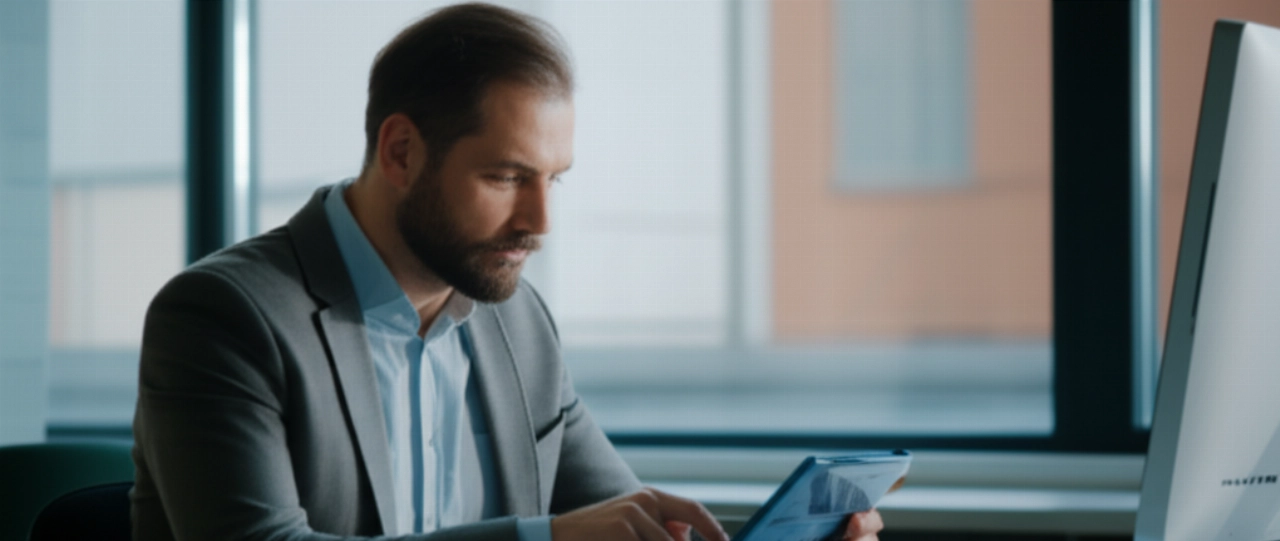In the high-stakes world of B2B and enterprise commerce, the phrase “ecommerce design cost” often triggers a mix of apprehension and skepticism. Many see it as a necessary evil, a line item on a budget, or worse—an unpredictable expense. But what if we told you that viewing it merely as a cost is precisely where many enterprises stumble?
The real challenge isn't the number on the invoice; it's the profound misunderstanding of what that investment truly buys. Are you investing in a superficial facelift for your online store, or are you engineering a future-proof, high-performance digital commerce engine that will drive your market share, reduce your Total Cost of Ownership (TCO), and deliver undeniable Return on Investment (ROI)?
At Commerce-K.com, we understand that for CTOs, E-commerce VPs, and CEOs, the conversation around ecommerce design cost isn't about pixels and aesthetics. It's about overcoming the scalability ceiling, escaping integration hell, and mitigating the terror of a failed migration. This article is your definitive roadmap to transforming a perceived expense into your most strategic competitive advantage.

Beyond the Price Tag: How Strategic Ecommerce Design Drives Unstoppable Growth
Your ecommerce presence is no longer just a sales channel; it's your central business operating system. It dictates how you interact with customers, manage inventory, process orders, and even inform product development. Therefore, the ecommerce design cost isn't just for a pretty storefront; it's an investment in:
- Operational Efficiency: Streamlining complex B2B workflows, automating order processing, and reducing manual data entry.
- Customer Experience (CX) Excellence: Crafting intuitive, personalized journeys that convert browsers into loyal buyers, even for highly configurable products or complex pricing models.
- Market Share Expansion: Outmaneuvering competitors with superior performance, unique features, and a frictionless purchasing process.
- Future-Proof Scalability: Building an architecture that can effortlessly handle spikes in traffic, expanding product catalogs, and evolving business models without replatforming every few years.
When approached strategically, your design investment becomes a catalyst for growth, not a drain on resources. It's about engineering a digital experience that your competitors simply cannot replicate with off-the-shelf solutions.

The Hidden Costs of 'Cheap' Ecommerce Design: Avoiding the Scalability Ceiling and Integration Hell
The allure of a low upfront ecommerce design cost is powerful, but it often masks a far more insidious problem: the accumulation of technical debt. Many enterprises fall into the 'one-size-fits-all' trap, opting for basic SaaS platforms or under-resourced agencies that promise quick, inexpensive solutions.
The consequences are dire:
- The Scalability Ceiling: Your platform buckles under peak traffic, slowing to a crawl or crashing entirely. Lost sales, frustrated customers, and reputational damage are the inevitable outcomes.
- Integration Hell: Disconnected ERP, PIM, CRM, and WMS systems lead to manual data reconciliation, errors, and an operational nightmare. Your teams spend more time battling spreadsheets than serving customers.
- Performance Bottleneck: A slow site kills conversions. Every second of load time costs you revenue, especially in the demanding B2B environment where efficiency is paramount.
- Lack of Customization: Your unique B2B pricing rules, complex product configurators, or specific approval workflows are impossible to implement, forcing you to adapt your business to the platform, rather than the other way around.
These aren't just inconveniences; they are direct threats to your competitive advantage and long-term profitability. A seemingly low initial ecommerce design cost can quickly balloon into millions in lost revenue, operational inefficiencies, and the eventual, unavoidable cost of a complete replatforming.

Deconstructing the Investment: Key Factors Influencing Your Ecommerce Design Cost and Value
Understanding what drives the ecommerce design cost is crucial for making an informed decision. It's not a fixed price; it's a reflection of the complexity, strategic depth, and future-proofing built into your solution. Key factors include:
- Customization & Unique Features: Do you require bespoke B2B functionalities, complex product configurators, or unique pricing logic? The more tailored the solution, the higher the initial investment, but also the greater the competitive moat.
- Integration Capabilities: Seamless integration with your existing enterprise systems (ERP, CRM, PIM, WMS) is non-negotiable. The number and complexity of these integrations significantly impact the cost, but also eliminate manual processes and data silos.
- User Experience (UX) & User Interface (UI) Design: Beyond aesthetics, this involves deep user research, wireframing, prototyping, and iterative testing to ensure an intuitive, high-converting journey for your specific B2B buyers.
- Performance Optimization: Engineering for speed, reliability, and responsiveness across all devices and traffic loads. This includes robust infrastructure, efficient code, and advanced caching strategies.
- Security & Compliance: Implementing enterprise-grade security measures and ensuring compliance with industry-specific regulations (e.g., PCI DSS, GDPR).
- Ongoing Support & Maintenance: A strategic partner provides not just the initial build but also long-term support, updates, and continuous optimization to ensure your platform evolves with your business.
Each of these elements contributes to the overall value and longevity of your digital commerce asset. Focusing solely on the lowest bid in any of these areas is a recipe for future operational headaches and missed opportunities.
From Expenditure to Strategic Asset: The Commerce K Approach to Ecommerce Design
At Commerce-K.com, we don't just quote an ecommerce design cost; we propose a strategic investment. Our philosophy is rooted in building robust, scalable, and future-proof digital commerce solutions that deliver measurable business outcomes. We are not just vendors; we are your strategic partners.
Our approach is defined by by:
- Deep Discovery & Strategy: We begin by understanding your unique business challenges, long-term goals, and existing technology stack. This ensures every design decision is aligned with your strategic objectives.
- Composable Commerce Architecture: We champion composable commerce and API-first principles, building flexible, modular systems that allow you to swap out components, integrate new technologies, and adapt to market changes without costly replatforming.
- Performance-First Engineering: Our designs are built for speed and reliability from the ground up, ensuring a seamless user experience even under the heaviest loads.
- Seamless Integration Expertise: We specialize in complex integrations, connecting your new commerce platform with your critical ERP, PIM, CRM, and WMS systems to create a unified, efficient ecosystem.
- Risk Mitigation: Our proven methodologies for design, development, and ecommerce migration minimize downtime, protect your SEO rankings, and ensure data integrity.
The difference between a vendor and a partner is profound. A vendor delivers a project; a partner engineers a competitive advantage that grows with your business.
Frequently Asked Questions about Ecommerce Design Cost
What's the typical ROI for a significant ecommerce design investment?
While specific ROI varies greatly by industry and initial state, strategic ecommerce design investments typically yield significant returns through increased conversion rates, higher average order values, reduced operational costs (due to automation and efficiency), and expanded market reach. Many of our clients see ROI within 18-36 months, often sooner, through a combination of revenue growth and cost savings.
How does custom design impact future scalability and maintenance?
Custom design, when executed with a composable, API-first approach, significantly enhances future scalability. Instead of being locked into a monolithic platform, you gain the flexibility to scale specific components independently. Maintenance becomes more manageable as changes can be made to individual services without affecting the entire system, leading to lower long-term Total Cost of Ownership (TCO).
Can a new design project integrate with our existing ERP/CRM systems?
Absolutely. Seamless integration with your existing ERP, CRM, PIM, and WMS systems is a cornerstone of enterprise ecommerce design. We prioritize robust, secure API-driven integrations to ensure data consistency, automate workflows, and provide a single source of truth across your business operations. This eliminates manual processes and enhances data accuracy.
What are the risks of a poorly executed ecommerce design project?
The risks are substantial: lost SEO rankings, data corruption, catastrophic downtime during migration, poor user experience leading to low conversion rates, inability to scale, and ongoing technical debt. A poorly executed project can cost millions in lost revenue, operational inefficiencies, and the eventual need for a complete, costly replatforming.
How long does a comprehensive enterprise ecommerce design project usually take?
Timelines vary based on complexity, required integrations, and customization. A comprehensive enterprise ecommerce design and development project typically ranges from 6 to 18 months, following a rigorous discovery and strategy phase. Our focus is on delivering a robust, high-quality solution that aligns with your strategic goals, not just meeting an arbitrary deadline.
Your Strategic Investment Starts Here
You've navigated the complexities of enterprise commerce long enough. The true ecommerce design cost isn't a burden; it's an opportunity to build a digital commerce engine that propels your business forward, dissolves technical debt, and establishes an unassailable competitive advantage.
Stop navigating technical debt and platform limitations. Your business deserves a clear digital commerce roadmap that delivers measurable results. The first step isn't a quote; it's a no-obligation Scoping & Strategy Session with our senior architects. We'll help you map your potential, de-risk your investment, and uncover the opportunities you're currently missing.
Click here, tell us about your project, and discover how a strategic investment in ecommerce design can transform your enterprise. Start building your future-proof commerce engine today.
Now that you understand the strategic value of design, discover how we execute a seamless ecommerce migration service or explore the benefits of headless commerce architecture for your enterprise.





